7 National Parks Where You May See the Northern Lights
No, they're not all in Alaska.
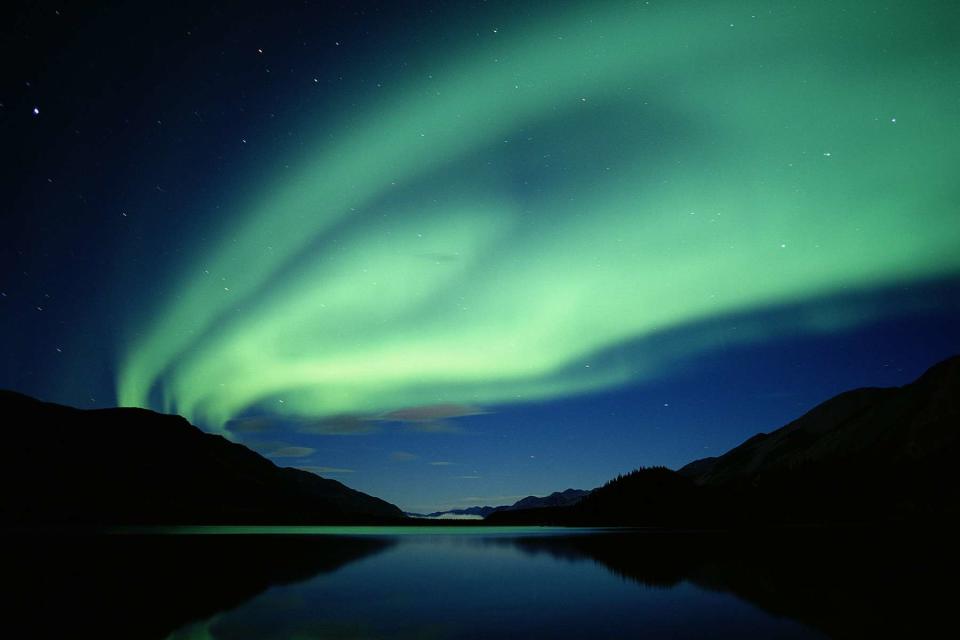
George Lepp/Getty Images
For those seeking to travel to every national park in the United States, visiting some of the northernmost parks in the country might provide an extra-special experience: seeing the northern lights. Also known as the aurora borealis, this atmospheric light show is created when charged particles from the sun impact the Earth's magnetic field and fluoresce. Though the best viewpoints for the northern lights are around latitudes between 65 to 70 degrees north in a region known as the auroral oval or zone (which runs through northern destinations like Alaska, Canada, and Scandinavia), you can still see the northern lights well south of that range if conditions are just right. That means there needs to be a combination of a strong geomagnetic storm and clear, dark skies. While seeing the aurora borealis is never guaranteed, here are seven U.S. national parks where you can try to spot this elusive natural phenomenon.
Denali National Park and Preserve, Alaska
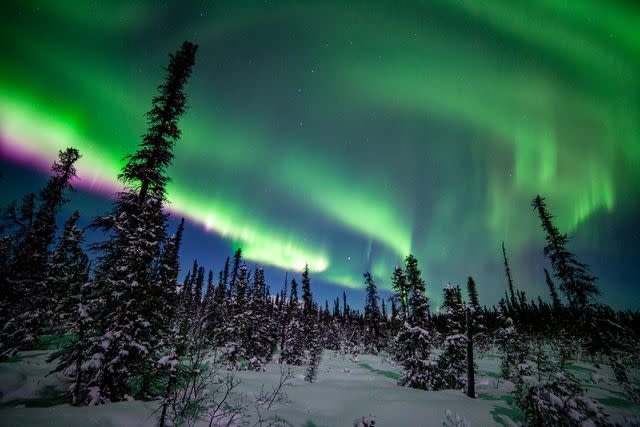
Daniel A. Leifheit/Getty Images
With a remote northern location that has essentially no light pollution, Denali National Park provides travelers with prime northern lights viewing conditions. There are some six million acres to explore between both the national park and the preserve, but traveling through this park is fairly difficult. Only a 15-mile section of the park's only paved road is open to private vehicles, after which you must book a bus to continue on the road or travel on foot. Because Denali is so far north, you'll have to visit between August and April to get any darkness at night — the long winter nights will provide you with the best chance of seeing the northern lights, though you'll need to be prepared for frigid temperatures. But those who are willing to brave the conditions have a good chance of being rewarded with an auroral show.
Isle Royale National Park and Preserve, Michigan
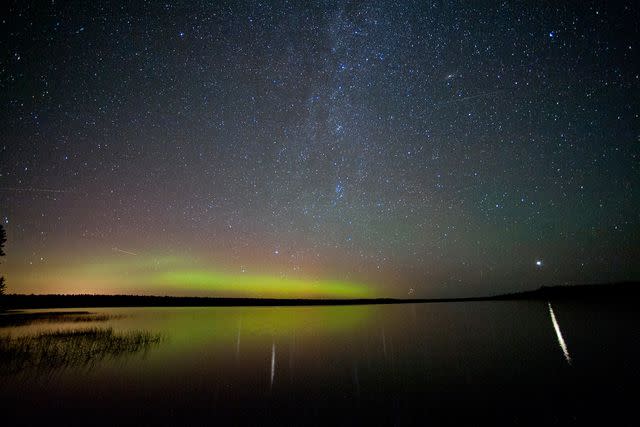
Layne Kennedy/Getty Images
One of the least-visited national parks, Isle Royale is located on an island on Lake Superior just south of the Canadian border. It's this remote northern location that makes the park a good northern lights viewing spot, particularly because it has little light pollution. But the park is closed during the winter, which is traditionally one of the most popular times to see the northern lights, as the skies are darker for longer. You'll have to visit in the fall or spring, and, fortunately, that means warmer temperatures. There's another benefit to visiting in shoulder season — the northern lights tend to be more active near the autumnal and vernal equinoxes in September and March, respectively.
Voyageurs National Park, Minnesota

BlueBarronPhoto/Getty Images
Not too far from Isle Royale is Voyageurs National Park, a dark-sky park (as certified by the International Dark-Sky Association) that is open year-round and is far more accessible than the remote island. It, too, is located on the border with Canada, and that northern latitude means there's a chance to see the northern lights here during stronger solar events. Park officials note that the key to northern lights viewing in Voyageurs is to have the most open northern view possible — the aurora typically shows up closer to the horizon rather than right above your head. They suggest the upper parking lot of Rainy Lake Visitor Center and the Meadowood Road Day Use Area as viewpoints.
Wrangell-St. Elias National Park and Preserve, Alaska
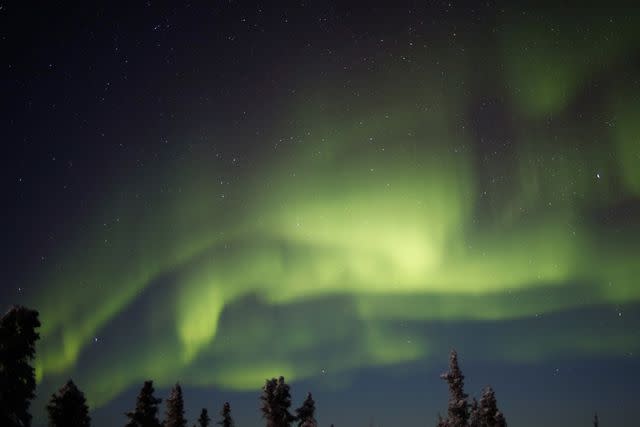
Andreas Gebhard/Getty Images
You thought Denali was big? Wrangell-St. Elias National Park and Preserve covers 13.2 million acres. That's three million acres larger than Switzerland. It also covers a vast elevation range, from sea level to 18,008 feet at the summit of Mt. St. Elias. Perhaps unsurprisingly, it's not easy to get around here, but it's that remoteness (plus its location near the auroral zone) that makes this park a great place to see the northern lights. There are just two gravel roads here, and while they're technically open year round, they're much harder to drive in the winter when everything freezes over. But if you take proper safety precautions to make the journey, you might just be able to see the northern lights in this vast, remote wilderness.
Glacier National Park, Montana
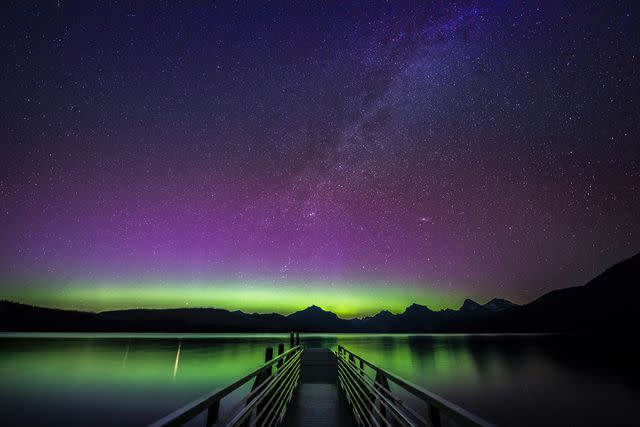
Diana Robinson Photography/Getty Images
A smidge farther north than the other continental United States parks on this list, Glacier National Park is a solid option for northern lights viewing — so long as there’s a strong enough geomagnetic storm. It's a designated International Dark-Sky Park in partnership with its Canadian neighbor, Waterton Lakes National Park, so light pollution is much less of a problem here. As with all more “southerly” parks, the aurora will likely appear closer to the horizon rather than directly overhead. As such, you’ll want to situate yourself somewhere with wide-open northern views. Some popular northern lights viewing spots include Lake McDonald, Bowman Lake, and Kintla Lake, as well as overlooks along Looking Glass Road. There’s even the Northern Lights Saloon in Polebridge if you want to see the aurora in comfort.
Theodore Roosevelt National Park, North Dakota
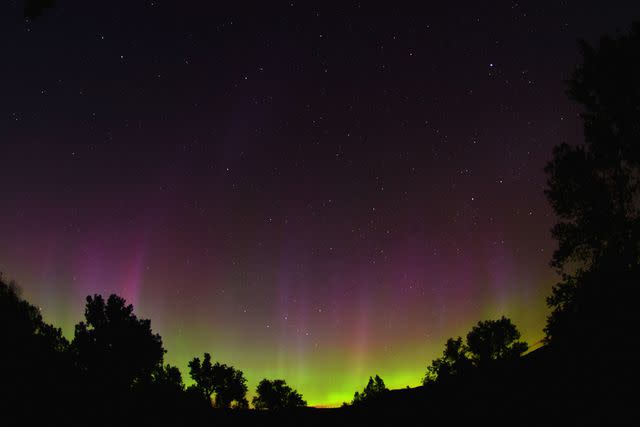
andyKRAKOVSKI/Getty Images
Theodore Roosevelt National Park covers more than 70,000 acres of badlands in western North Dakota. Since the park is in the southern half of the state, seeing the northern lights is not a guarantee every night. It’ll take a significant solar event to produce the aurora here, but when it does happen, you’ll have big skies for an opportunity to see the show. That said, the park's darkness and openness offer visitors solid stargazing any clear night, so even if the aurora doesn’t make an appearance, seeing the Milky Way or a meteor shower is certainly worth a nighttime visit to this park.
Acadia National Park, Maine
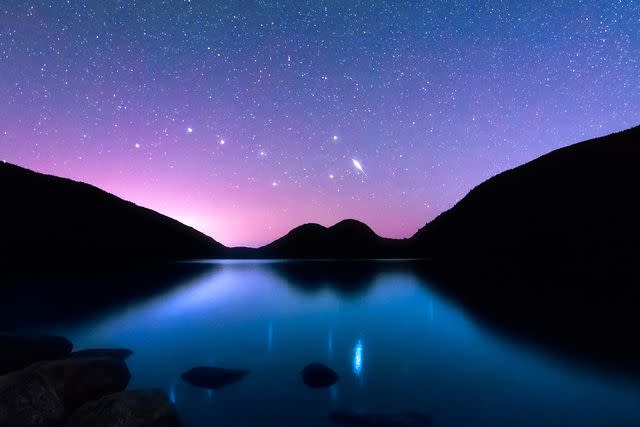
Christopher Mills/Getty Images
Because Acadia is rather far south, the aurora isn’t regularly visible here, but if there’s a particularly strong solar storm, you might get a wonderful show. Acadia is worth mentioning given its relative ease of accessibility. It’s just shy of three hours from Portland, Maine, and about five hours from Boston. Despite this "closeness" to cities, Acadia is still fairly removed from light pollution. If you do try your luck viewing the northern lights at Acadia, the higher elevations in the park such as Cadillac Summit would provide the best views of the night sky. (Just note that Cadillac Summit is closed during the winter, and driving there requires a reservation from spring through fall.) As always, make sure you’re facing north and looking along the horizon.
For more Travel & Leisure news, make sure to sign up for our newsletter!
Read the original article on Travel & Leisure.

